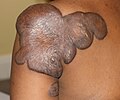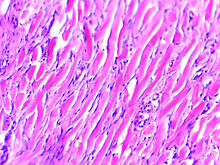
Plastic surgery is a surgical specialty involving the restoration, reconstruction or alteration of the human body. It can be divided into two main categories: reconstructive surgery and cosmetic surgery. Reconstructive surgery includes craniofacial surgery, hand surgery, microsurgery, and the treatment of burns. While reconstructive surgery aims to reconstruct a part of the body or improve its functioning, cosmetic surgery aims to improve the appearance of it. A comprehensive definition of plastic surgery has never been established, because it has no distinct anatomical object and thus overlaps with practically all other surgical specialties. An essential feature of plastic surgery is that it involves the treatment of conditions that require or may require tissue relocation skills.

A scar is an area of fibrous tissue that replaces normal skin after an injury. Scars result from the biological process of wound repair in the skin, as well as in other organs, and tissues of the body. Thus, scarring is a natural part of the healing process. With the exception of very minor lesions, every wound results in some degree of scarring. An exception to this are animals with complete regeneration, which regrow tissue without scar formation.

A plantar wart, or verruca vulgaris, is a wart occurring on the bottom of the foot or toes. Its color is typically similar to that of the skin. Small black dots often occur on the surface. One or more may occur in an area. They may result in pain with pressure such that walking is difficult.
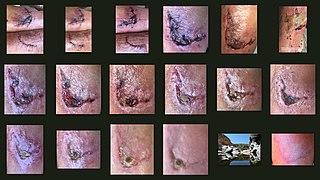
Wound healing refers to a living organism's replacement of destroyed or damaged tissue by newly produced tissue.
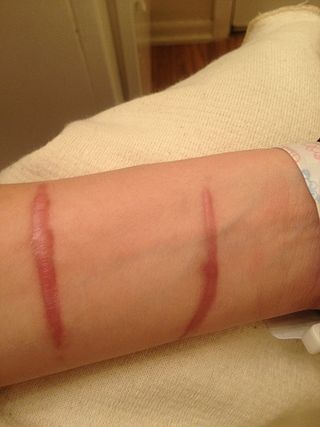
A hypertrophic scar is a cutaneous condition characterized by deposits of excessive amounts of collagen which gives rise to a raised scar, but not to the degree observed with keloids. Like keloids, they form most often at the sites of pimples, body piercings, cuts and burns. They often contain nerves and blood vessels. They generally develop after thermal or traumatic injury that involves the deep layers of the dermis and express high levels of TGF-β.

Triamcinolone is a glucocorticoid used to treat certain skin diseases, allergies, and rheumatic disorders among others. It is also used to prevent worsening of asthma and COPD. It can be taken in various ways including by mouth, injection into a muscle, and inhalation.
Lip augmentation is a cosmetic procedure that modifies the shape of the lips using fillers, such as collagen or implants. The procedure may be performed to increase lip size, correct asymmetry, create protrusion, or adjust the ratio of the top and bottom lips. The procedure typically involves surgical injection, though temporary non-surgical alternatives exist.

Gluteoplasty denotes the plastic surgery and the liposuction procedures for the correction of the congenital, traumatic, and acquired defects and deformities of the buttocks and the anatomy of the gluteal region; and for the aesthetic enhancement of the contour of the buttocks.

Triamcinolone acetonide, sold under the brand name Kenalog among others, is a synthetic corticosteroid medication used topically to treat various skin conditions, to relieve the discomfort of mouth sores, and by injection into joints to treat various joint conditions. It is also injected into lesions to treat inflammation in some parts of the body, particularly the skin. In nasal spray form, it is used to treat allergic rhinitis. It is used for the treatment of macular edema associated with uveitis. It is a more potent derivative of triamcinolone, and is about eight times as potent as prednisone.
Laser surgery is a type of surgery that uses a laser to cut tissue.

A breast implant is a prosthesis used to change the size, shape, and contour of a person's breast. In reconstructive plastic surgery, breast implants can be placed to restore a natural looking breast following a mastectomy, to correct congenital defects and deformities of the chest wall or, cosmetically, to enlarge the appearance of the breast through breast augmentation surgery.

In pathology, a contracture is a shortening of muscles, tendons, skin, and nearby soft tissues that causes the joints to shorten and become very stiff, preventing normal movement. A contracture is usually permanent, but less commonly can be temporary, or resolve over time but reoccur later in life.

Langer's lines, Langer lines of skin tension, or sometimes called cleavage lines, are topological lines drawn on a map of the human body. They are parallel to the natural orientation of collagen fibers in the dermis, and generally perpendicular to the underlying muscle fibers. Langer's lines have relevance to forensic science and the development of surgical techniques.
Photorejuvenation is a skin treatment that uses lasers, intense pulsed light, or photodynamic therapy to treat skin conditions and remove effects of photoaging such as wrinkles, spots, and textures. The process induces controlled wounds to the skin. This prompts the skin to heal itself, by creating new cells. This process—to a certain extent—removes the signs of photoaging. The technique was invented by Thomas L Roberts, III using CO2 lasers in the 1990s. Observed complications have included scarring, hyperpigmentation, acne, and herpes.

Burn scar contracture is the tightening of the skin after a second or third degree burn. When skin is burned, the surrounding skin begins to pull together, resulting in a contracture. It needs to be treated as soon as possible because the scar can result in restriction of movement around the injured area. This is mediated by myofibroblasts.
Cosmetic surgery, also referred to as aesthetic surgery, is a surgical procedure which endeavours to improve the physical aspects of one's appearance to become more aesthetically pleasing. The continuously growing field of cosmetic surgery is closely linked with plastic surgery, the difference being, cosmetic surgery is an elective surgery with the sole purpose to enhance the physical features of one's appearance. Plastic surgery is performed in order to rectify defects to reinstate normality to function and appearance. Cosmetic surgical procedures are generally performed on healthy functioning body parts, with the procedure being optional not medically necessary. The inevitable aim of cosmetic surgery is to enhance one's image, encompassing reducing the signs of aging and/or correction of a believed deviation on one's body in turn it is surrounded by controversy. Although the implementation of cosmetic surgery within Australian society is growing, the trade has struggled to find its place within the Australian culture.
Ear piercing is one of the oldest forms of body modification. It occurs when holes are created on the ear lobes or cartilage to allow the insertion of decorative ornaments, such as earrings. Ear piercing in children has been around for centuries as part of ritualistic and cultural traditions but has continued to become a worldwide mainstream fashion statement. It is extremely common in Nigeria, India, Brazil and Hispanic countries.
Scar free healing is the process by which significant injuries can heal without permanent damage to the tissue the injury has affected. In most healing, scars form due to the fibrosis and wound contraction, however in scar free healing, tissue is completely regenerated. During the 1990s, published research on the subject increased; it is a relatively recent term in the literature. Scar free healing occurs in foetal life but the ability progressively diminishes into adulthood. In other animals such as amphibians, however, tissue regeneration occurs, for example as skin regeneration in the adult axolotl.
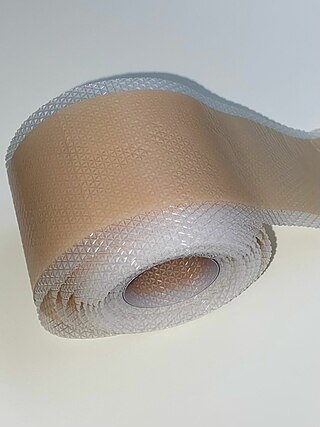
Silicone gel sheeting (SGS) has been an effective reduction and preventive scar therapy since 1980. It was first discovered to be used in treating scars by Perkins in Australia and New Zealand, and first discussed in the thesis of Karen Quinn, a British biomedical engineering student, in 1985.
Laser-assisted drug delivery (LADD) is a drug delivery technique commonly used in the dermatology field that involves lasers. As skin acts as a protective barrier to the environment, the absorption of topical products through the epidermis is limited; thus, different drug delivery modalities have been employed to improve the efficacy of these treatments. The use of lasers in LADD has been shown to enhance the penetration of drugs transdermal, leading to a higher absorption rate, limited systemic effects, and reduced duration of treatment. Although this technique has evolved in the past decade due to its efficacy through scientific research and clinical practice, there remain some limitations regarding the safety aspect that needs to be taken into consideration.









